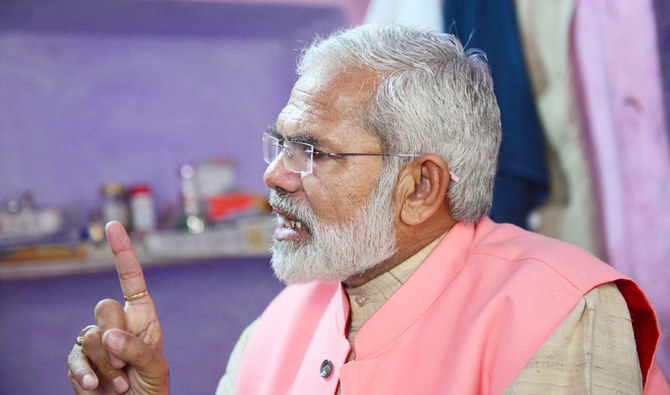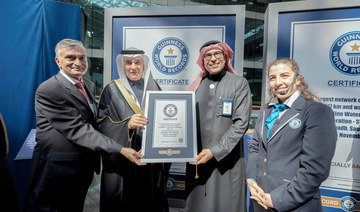LUCKNOW, India: His white beard neatly trimmed and a sleeveless jacket thrown over his traditional Indian shirt, Abhinandan Pathak turns heads thanks to an uncanny resemblance to the country’s Prime Minister Narendra Modi.
But Pathak — almost the same height and build as the PM, and who even walks in a similar way — is no ordinary doppelganger.
Bitter at Modi’s “failed promises,” Pathak is running as an independent against Modi’s Bharatiya Janata Party (BJP) in India’s marathon election — and is getting a lot of support.
The largest election on Earth wraps up on Sunday May 19, after seven weeks of intense campaigning and the votes of 900 million Indians.
“The anger (toward Modi) is real. I can feel it wherever I go,” Pathak, 58, told AFP from his one-room shanty home in the northern city of Lucknow, in India’s most populous state Uttar Pradesh.
When Modi was first elected in 2014, Pathak was a supporter. Because of his resemblance to the premier, people “adored me, they asked for selfies and hugged me.”
“I was showered with love. People thought that if they can’t meet the real Modi, they might as well meet me,” he said.
“But now they get angry when they see me. They ask me ‘where are the good days’,” he said, after Modi’s 2014 election slogan “achhe din ayenge” (“good days will come“).
Pathak’s brightest moment came in May 2014, when he says Modi hugged him during a victory parade in the city of Varanasi, Uttar Pradesh.
But it was all downhill after that. He was ignored by the party and his many letters to Modi went unanswered, Pathak said.
Lookalike candidates are nothing new in the colorful world of Indian politics. Their presence invariably invokes curiosity, with crowds thronging to catch a glimpse of the duplicates.
In Mumbai, another Modi lookalike — Vikas Mahante — has been out and about on the campaign trail in a district of the city, and on a BJP ticket.
The 57-year-old businessman, who even played Modi in a little-known 2017 biopic, has been the star attraction at rallies.
But it can get hairy. Once people threw stones at him and he had to be rushed to safety. Now the lookalike has his own bodyguard.
“Once I was chased by a gang of men around midnight while I was returning from a rally,” he told the Hindustan Times daily in 2017.
“(I) stepped on the accelerator, jumped all signals and didn’t stop anywhere.”
In 2014, Prashant Sethi lapped up being a dead ringer for Rahul Gandhi, the scion of the country’s Nehru-Gandhi political dynasty and Modi’s main challenger in both the 2014 and 2019 elections.
Sethi, who sells fried chicken in Surat in the western state of Gujarat, was reportedly offered a film role too.
But now the Modi supporter has had enough. He has transformed his look: putting on weight, growing a beard and changing his hairstyle — all to look different from Gandhi.
“Me and my family have been supporters of the BJP since the beginning. But because of my look I was always teased,” Sethi told AFP.
“People had started calling me pappu,” he said, referring to a common nickname — used by Gandhi’s detractors — for slightly stupid individuals.
“So I had to change my look,” he said.
But back in Lucknow feisty father-of-six Pathak has no wish to change.
“Why should I? I have been in politics since the 90s and I have always sported the beard and kurta,” he said, referring to a traditional Indian long-sleeved shirt, and showing a picture from his younger days.
“I am the original one, Modi is my lookalike.”
































